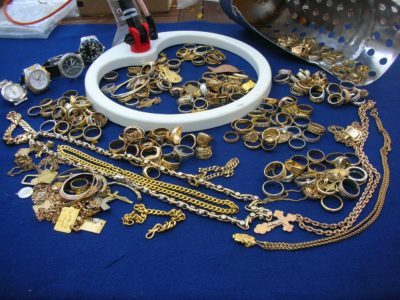In previous books I’ve tried to teach hunters to understand the shoreline features that determine where gold will come to rest and be held. Learning about how these features operate is the difference between a focused, well thought-out hunt and relying on pure fluke. Let’s quickly define and clarify a few of these for later reference:
Grade
The grade is the overall shoreline sand pattern. How much sand is there? How does it slope at the shore? Is it flat or contoured?
Stratification
Stratification is how the various levels of material relate to one another. How deep do you have to dig before you reach denser, more solid material? How many layers are there? Which layers are solid enough to support heavy targets? What age are these targets?
Sand Contour
Sand contours are something that’s looked at thoroughly in “The Gold Jewellery Hunter’s Handbook” (2015). Understanding these patterns is critical to success. What shape are any trenches or gullies? How deep are they in relation to the overall grade? What parts of these low areas are within detecting range of any heavy targets?
Sand Textures
Understanding sand textures is also an important part of determining where the heavier, more solid targets can be found. I pluralize the word “textures” because understanding this site feature is about making comparisons between different types of material. Lighter material that drifts in as silt will be unlikely to hold any heavier targets. It is temporary. More solid, hard packed material will be more permanent and retain targets. Another part of understanding this feature of a site is how these various sand textures relate to the current. Is the wave action strong enough to move material? From where to where? How quickly is this happening?
Precipitate
Closely related to sand textures is precipitate. Precipitate is the end result of this process whereby ground is covered and objects are buried deep. For example, at my local beach sand is continually blown inshore onto the grassed areas. Therefore any silver coins present there are very deep. In the water, seasonal changes can bring sand in close to shore during the winter and remove it in the summer–exposing old targets.
As well, understanding the process of how objects are moved and deposited at the beach is also critical knowledge–often making the difference between a highly successful hunt and getting “skunked:”
Exchange
Exchange is something that happens on shorelines that have some level of wave action. Where you have a faster wave interval, more material is pushed in than is drawn out. When the waves subside, this same material falls back out into deeper water. Sometimes objects are carried in with this sand and deposited either permanently or until they are dragged back out. Understanding this process can explain how some sites seem to replenish themselves, or conversely, be full of signals one day and empty the next.
Classification
Classification is the process whereby objects are grouped according to weight and density. It is the result—the dependant variable of all the other shoreline features. This is something that shoreline surface hunting (by eye) can teach you a lot about. One place I search for artefacts had been an old incinerate dump from about 1900 to the 40’s. It contains a wide variety to materials—from stone and brick to Bakelite pieces and metals—brass, copper, lead, iron and steel. It’s a fascinating study because every one of these material will be placed separately along the shore by the current. To find gold (lost in garbage) and silver coins, one needs only look for other dense, heavy similarly sized objects and begin sifting.
There’s also such a thing as “levels” of classification. By this I mean the degree to which objects will be classified within the strata. At some locations, there will be heavy targets available relatively close to the surface. At other locations (or times), wave action will combine with soft sad textures to drive any gold (or even coins) deep. This also relates to seasonality. During “on-season” there will be more recently lost items then remain near the surface whereas in winter or during the off season there has been more time for the waves to classify targets.
Classification is the most important thing to understand of all and learning to look for the clues and indicators of how classified / stratified a site or section is critical skills. It’s kind of a paradox–if you want to find big, heavy gold–learn about sand–sand levels, sand textures, sand contours and sand grades.
(I will to go into greater detail about how these factors affect shoreline treasure hunting success later on in the book).
From: “Water Hunting: Secrets of the Pros: Volume II”
by clive james clynick
clivesgoldpage.com